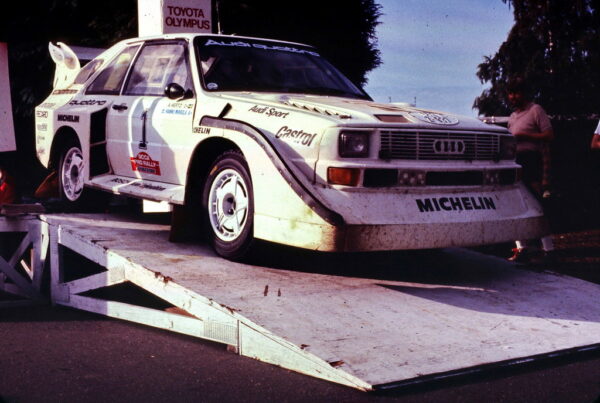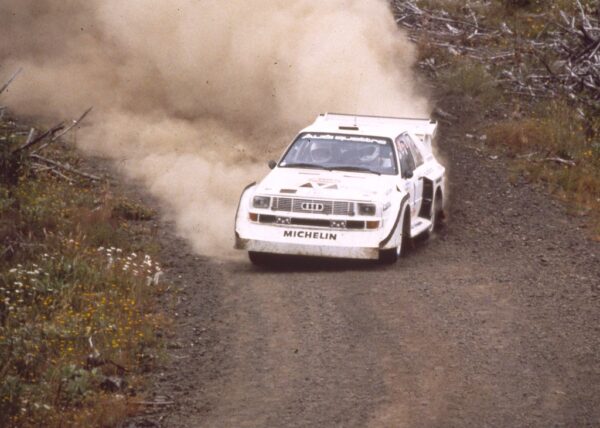Audi Quattro B2 History: The First of its Kind
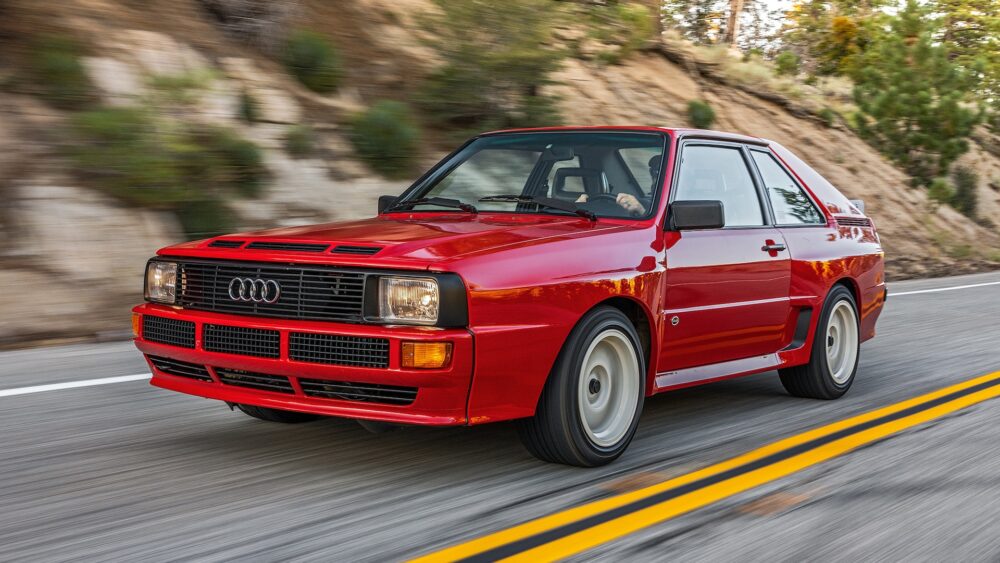
In 1980, Audi returns to its motorsport roots with the debut of one of the finest sports cars of all time: the Quattro.
The Audi Quattro is legendary in the world of rally. The list of awards alone could easily span multiple pages. Not to mention the many fantastic drivers who called the Quattro their office. In the 1980s, drivers such as Walter Röhrl, Michèle Mouton, and Hannu Mikkola piloted the turbocharged 4WD beast to victories across the world. Even today, the car routinely sees action on both dirt and tarmac events. The various evolutions of the Quattro in motorsport are well-documented – but at the end of the day, every rally car must be based on a production variant. Thus, the true story of the Quattro doesn’t start at the 1980 Austrian rally. It dates back quite a bit farther.
The Quattro A1 and A2 evolutions won a total of eight world rallies between 1983 and 1984. The car also propelled Michèle Mouton to history as the first female rally championship winner in 1981.
Audi’s Grand Tourer
The year is 1969. Auto Union dissolves after Volkswagen abandons the DKW marque, leaving only Audi left. By this point, a vehicle simply known as the Audi was in production for four years. It’s a relatively unassuming four-door sedan that was the ancestor to the current saloons. Up until 1969, that car was the bread and butter of Audi. But a new trend was coming to the European market with the advent of the grand tourer. Vehicles such as the Jensen Interceptor, Ferrari 250 GT, and Maserati 3500GT were making waves as classy, pure sports cars for spirited enthusiasts.
Audi’s take on this concept, several years in the making, debuts at the Frankfurt Motor Show, This new grand tourer, called the Audi 100 Coupe S, was a budget-conscious take on this philosophy, pushing out 30,687 units between 1969 to 1976. But it wasn’t received fondly as far as spirited cars go. It was a front-wheel drive with only 115 horsepower on tap from its 1.8L inline-four.
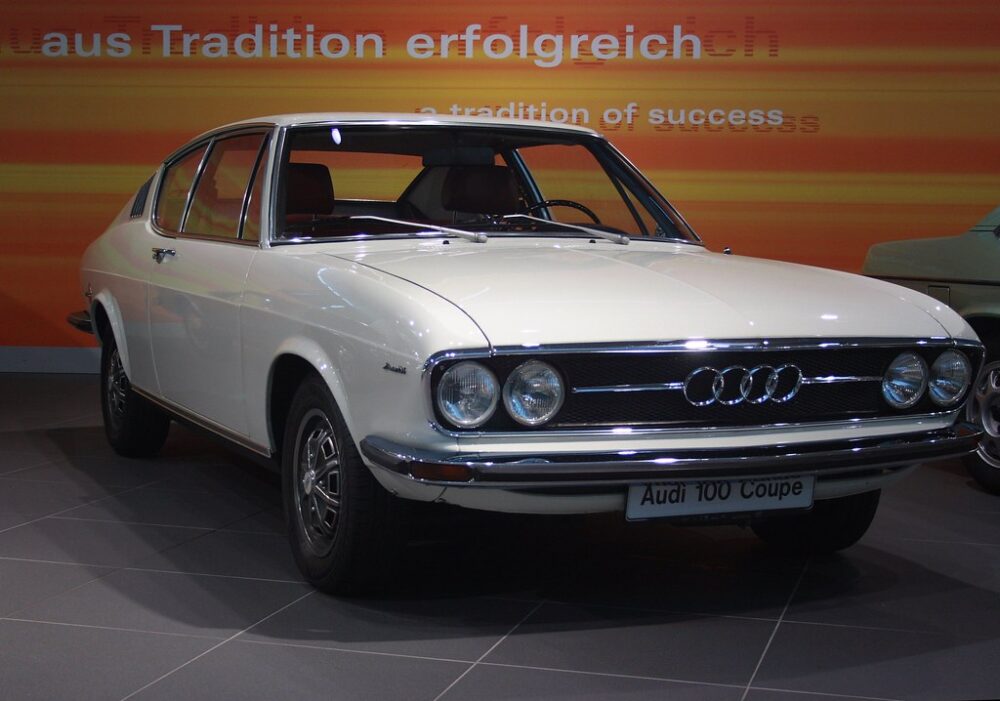
Audi and Porsche developed 2 prototype rear-wheel-drive performance concepts, the V3 and V4. Each had the running gear of a Porsche 928 producing 350 horsepower.
Planting the First Seed
By 1977, Audi knew they could do better. And the chief engineer, Jörg Bensinger, found inspiration in an unlikely source: a pre-production military truck. Volkswagen was the chief producer of much of the small, commonplace army vehicles. Their most popular model at the time was the Type 181, based on the Kübelwagen. It was a formidable design, inspired by the classic US Army Jeep.
While the Kübelwagen itself would continue production well into the 1980s, Volkswagen knew its limitations – primarily, its lack of four-wheel-drive. So in 1977, VW put the 4WD Type 183 into pre-production, giving Bensinger his first taste of this new drivetrain. And while the 183 left a legacy of its own, being referred to by its nickname “Iltis,” Bensinger had an idea about that drivetrain. Since it’s far more capable off-road, what if you put it in a sports car? Or better yet, a rally car?
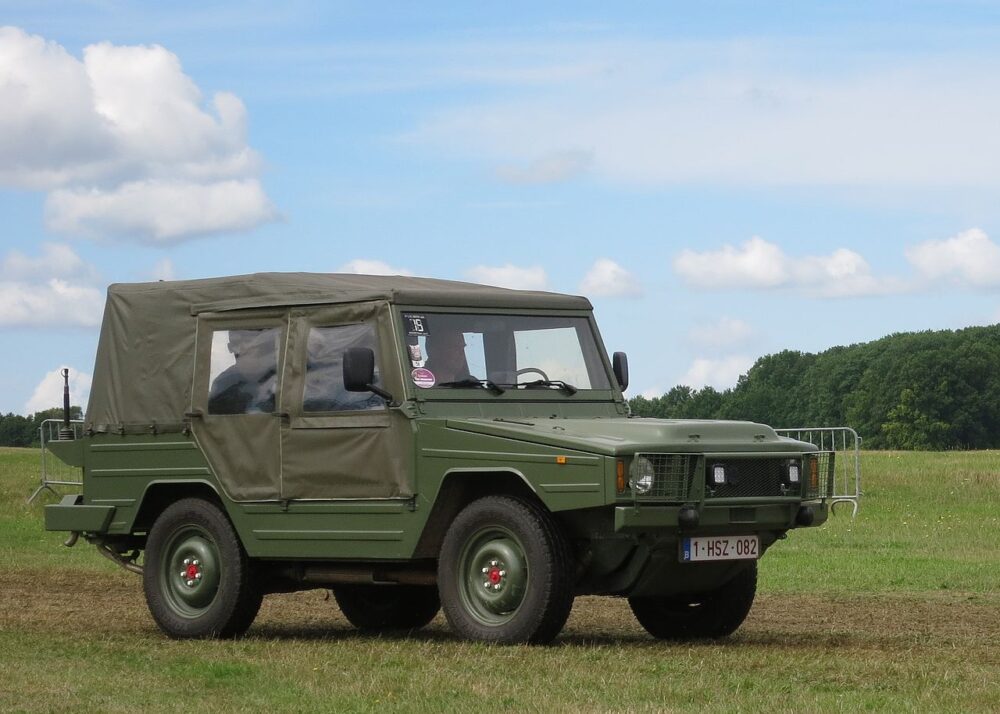
The Iltis was originally part of a project called “Europa Jeep.”
Where Greatness Begins
Bensinger proposed this very idea to Audi in ‘77, and they liked the sound of it. Not least of which because of their long and storied heritage in motorsport, which was all but lost following the War. Plus, Volkswagen in general was undergoing a transitional phase across a wide range of models. The common thread between these two companies was the B1 platform, shared between the Passat and Audi 80. Between 1972-1978, this platform recorded over 1,100,000 units leaving Audi’s factory. It was a venerable entry-level luxury saloon car, a solid step up from the more pedestrian Passat.
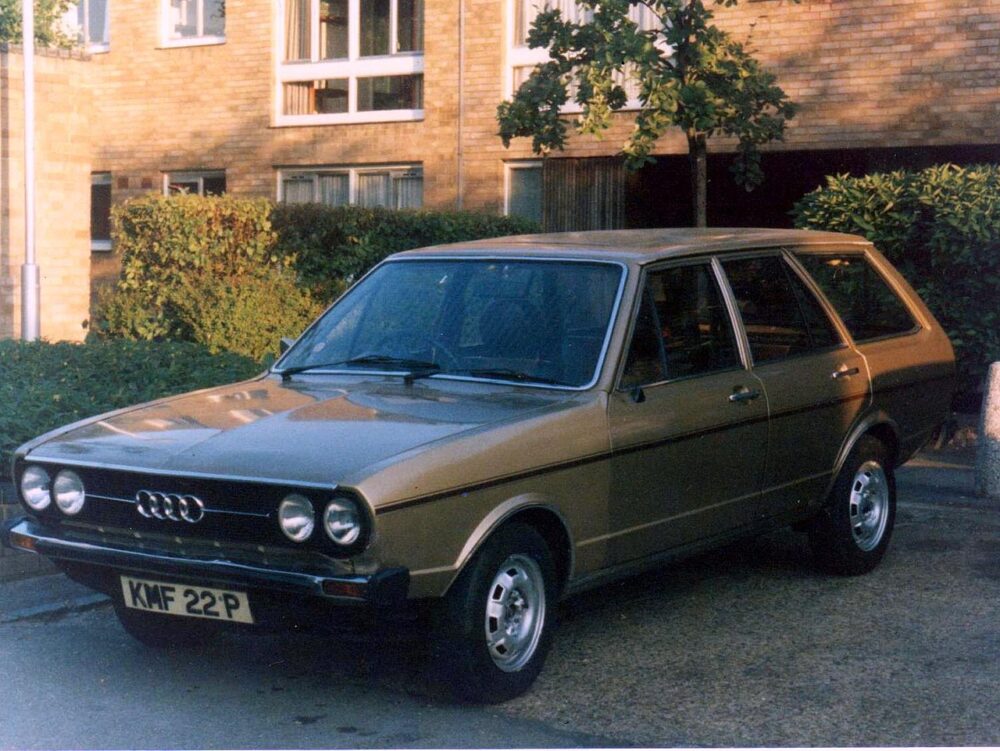
The 1972 Audi B1 platform was the first use of the EA827 I-4 engine, which is still in production for Volkswagen vehicles to this day.
But by this time, the new decade was on the horizon, and the 1970s aesthetic was sharply falling out of vogue. A new, fresher look was needed for the next-generation models: the B2 platform. The B2, designed by the legendary Giorgetto Giugiaro, was envisioned as a pair of vehicles: a saloon and a coupe. Bensinger selected the latter design as a test platform for the experimental four-wheel-drive system. This decision is directly responsible for creating the silhouette which defined 1980s rally – the marriage of Giugiaro’s timeless design with a turbocharged four-wheel-drive powerplant.
Running on All Fours
The four-wheel-drive system, as mentioned before, took inspiration from the VW Iltis. In 1977, Audi engineers were shocked at its performance in deep snow during a test drive in Sweden, and sought about engineering it for a road car. Thanks to Bensinger’s input, this technology was destined for something sportier than a military vehicle, so a brand-new system was devised.
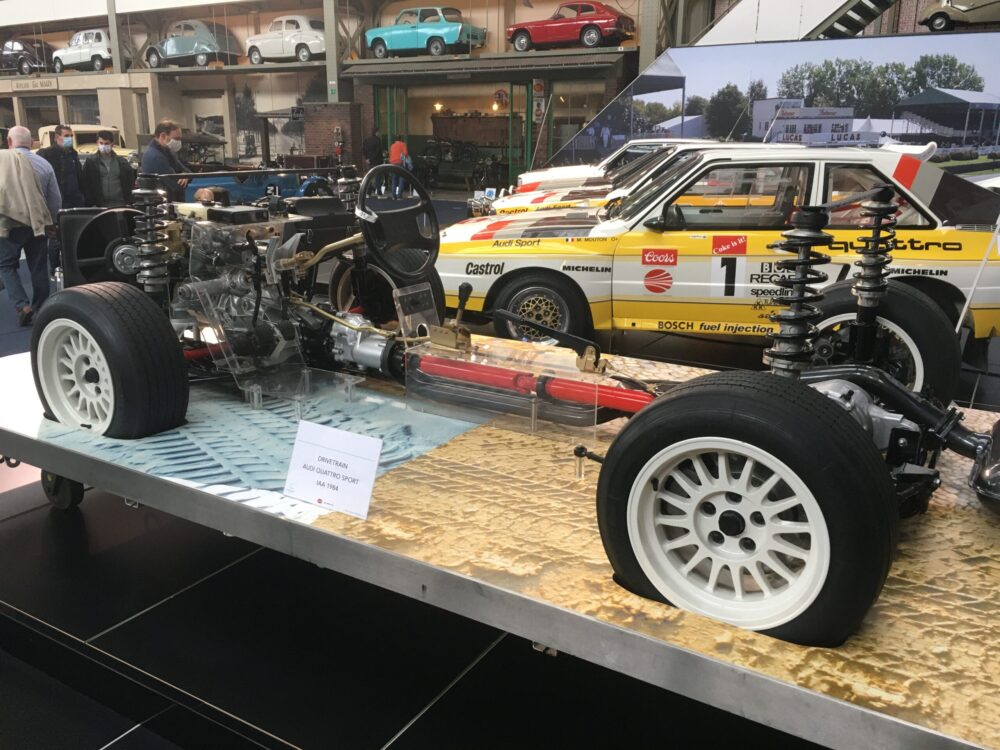
A cutaway of the quattro system. Each VW-group marque operates some variation of this fundamental design under different names.
The original quattro (so named after the number “four” in Italian) used a center differential to split power between all four wheels. This system was locked manually and worked by means of a hollow shaft in the transmission housing a smaller secondary shaft. Basically, the outer hollow shaft engaged one part of the center differential permanently, giving you rear-wheel-drive. But at the press of a button, another shaft extends from the middle and engages an inner set of teeth. This inner set was connected to an output shaft to the front, leading to a perfect 50/50 torque split between front and rear.
Unlike systems that use transfer cases, this was a small, handy little device. Its lightweight and compactness perfectly suited a nimbler, sportier platform. The quattro system, while first implemented on the car which bears its name, was equally destined for greatness. The system received no fewer than six full overhauls between 1980 and today, and is now featured as standard in most Audi models worldwide.
Doing it Right the First Time
The Audi B2 was serviced heavily by designers during its overhaul with the quattro system. People knew this was going to be something special. Essentially, they were creating the world’s first purpose-built four-wheel-drive production rally car. As such, it received a new sportier look courtesy of designer Martin Smith, and a totally revised interior. The engine was also bespoke to the car, a turbocharged 2144cc I-5. The overall design of the car, however, remained relatively unaltered from Giugiaro’s initial concept. And while it hosted plenty of advanced technology, the name was both elegant and simple: Quattro. To differentiate it from the drivetrain it shares its name, the Germans came up with a nickname: “Ur-Quattro.” The prefix “Ur-” in German means, roughly, “First of its Kind.”
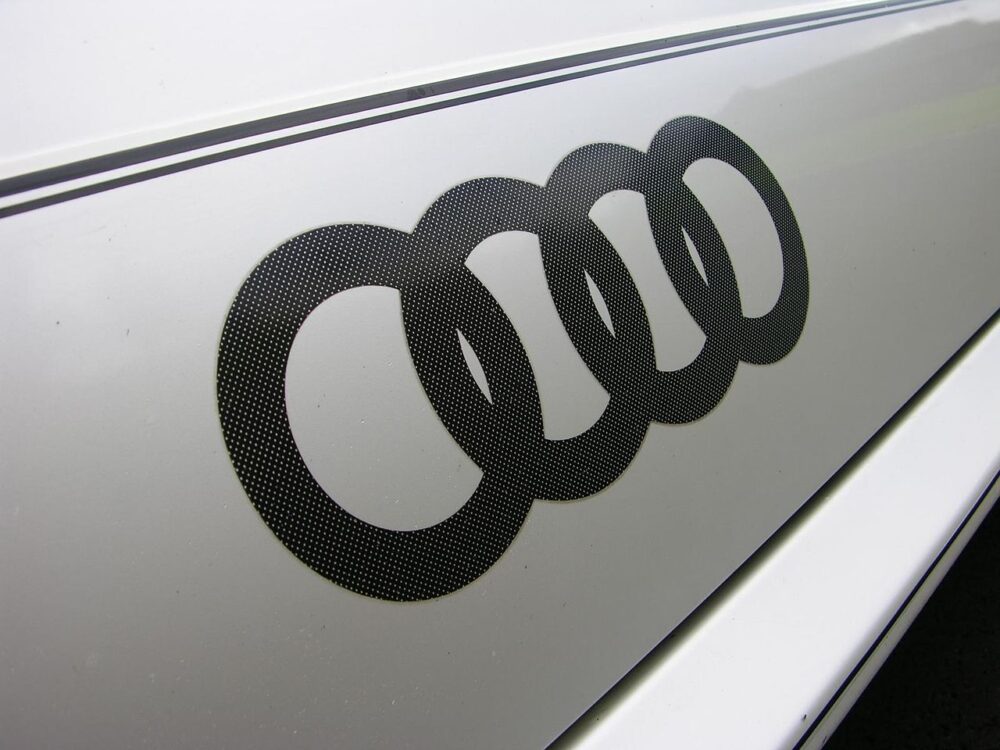
Canada only received 99 Quattros in total. But they did come with leather upholstery as standard.
European markets were the first to be graced with this fine automobile. Boiled down, the Quattro was a semi-handbuilt modification of the standard Audi B2 Coupe, both introduced in 1980. The Quattro produced a nippy 197 horsepower from its modest but sturdy engine, which had to be revised to 2133cc in rally spec to comply with displacement regulations. In truth, the 20V rally engine was a different breed entirely from the 10V I-5 in the road car. But that fact didn’t dissuade the public, who were absolutely loving the car. The B2 platform, in general, was receiving widespread critical acclaim, and the Quattro in particular. By 1981, the car was disappearing from dealerships more quickly than they could be replaced. This was partially due to marketing from their utter dominance in rally, but also because of their price being a fraction of the likes of Porsche and BMW.
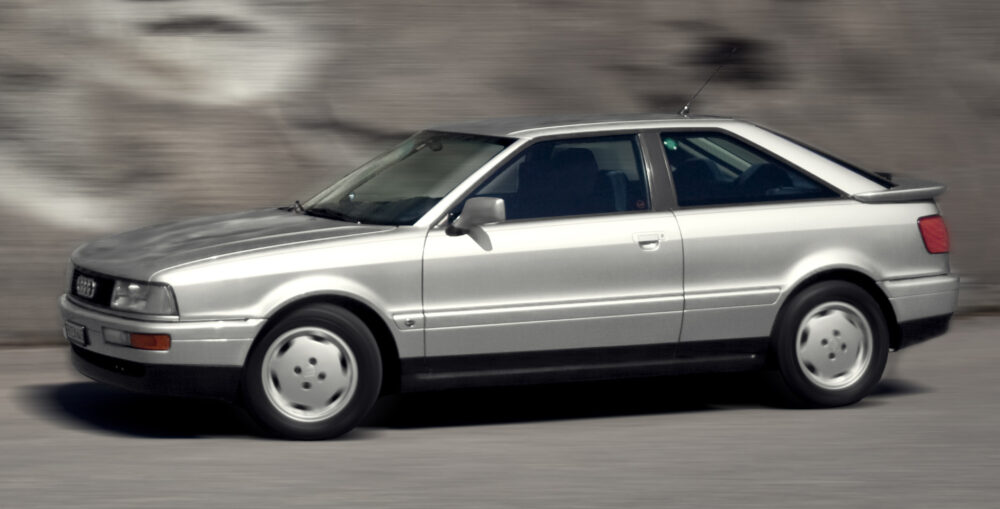
The standard B2 Coupe received a facelift in 1984, making it more closely resemble the Quattro. Shown here is the pre-facelift version.
Taking the Gold
The Quattro is widely regarded as one of the greatest rally cars of all time. This is both a blessing and a curse, as this legacy often overshadows the incredible road car. 11,452 of these vehicles were produced in total, 662 for North America between ‘83 and ‘86. These numbers are a far cry from the 1,000,000-plus standard B2-platform Audis, but its influence was undeniable. By 1983, Audi was offering quattro systems in its other standard models, for example. The car also received almost constant revisions and served as an excellent testbed for new advanced technology. Probably the most heavily noted of these experiments was Audi’s first LCD instrument cluster, also in 1983. The engine received plenty of love as well, growing to a 2226cc 20V I-5 with 217 horsepower by 1989. Still a modest amount, but parts were readily available to up those figures if the owner so desired.
The quattro system was also updated in 1987 with a brand-new diff. Now it was a proper Torsen (torque sensing) center diff, distributing power to and from a wheel the instant it starts losing traction. This greatly improved the usability of the system for both on and off-road, as it was mechanically linked to all four wheels and thus could immediately deliver torque where it was needed.
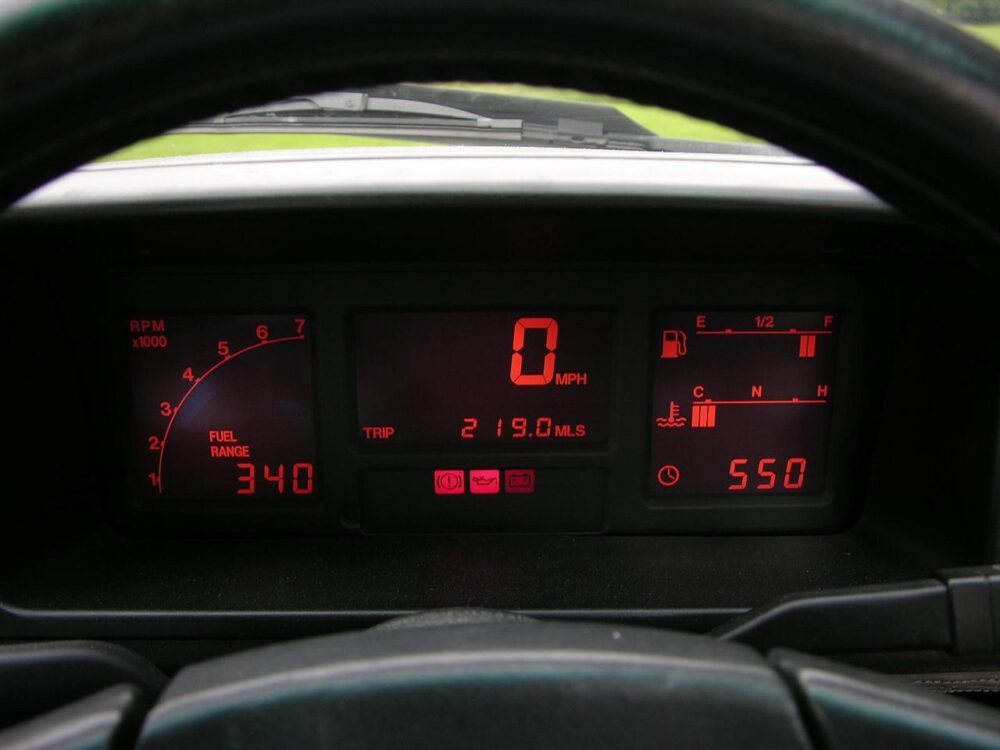
Virtually every year saw revisions to the interior, from new steering wheels and seats to leather-wrapped center consoles and new dash layouts.
A Lasting Legacy
The final Quattro rolled off the assembly line on May 17, 1991, but it impacted the future of Audi and rally racing ever since. Audi produced numerous tribute concept cars, most famously the 2010 and 2013 concepts. And the cars are prized by collectors and racers alike for their usable performance. It wasn’t the first full-time four-wheel-drive production car, nor was it the first turbocharged sports car. But it was the first to marry these two concepts together, and it did so with both grace and aplomb.
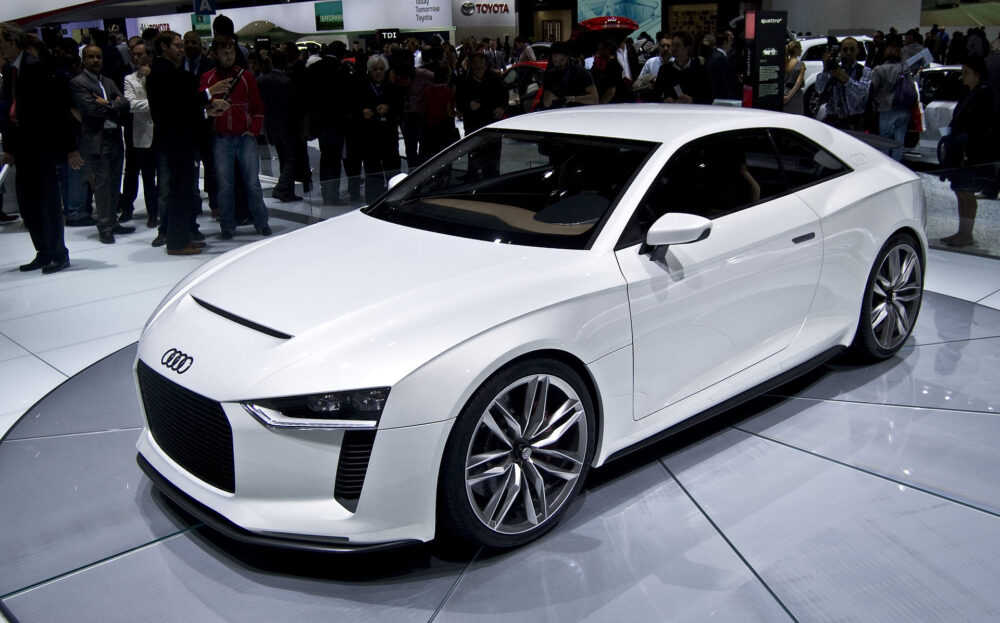
Elements of the Quattro concept’s front end found their way into the facelift Audi R8. Photo by David Villarreal Fernandez
Automotive journalists often cite the turbo 1980s cars as utter handfuls to drive. And it’s true that the Quattro’s weight distribution meant it demanded respect. But unlike copycats that immediately followed, the Quattro itself was always regarded as one of the finest vehicles to come out of the 80’s. Between its timeless design, innovative features, and almost unmatched rally heritage, the Quattro is truly one of the finest vehicles to wear the Audi badge.
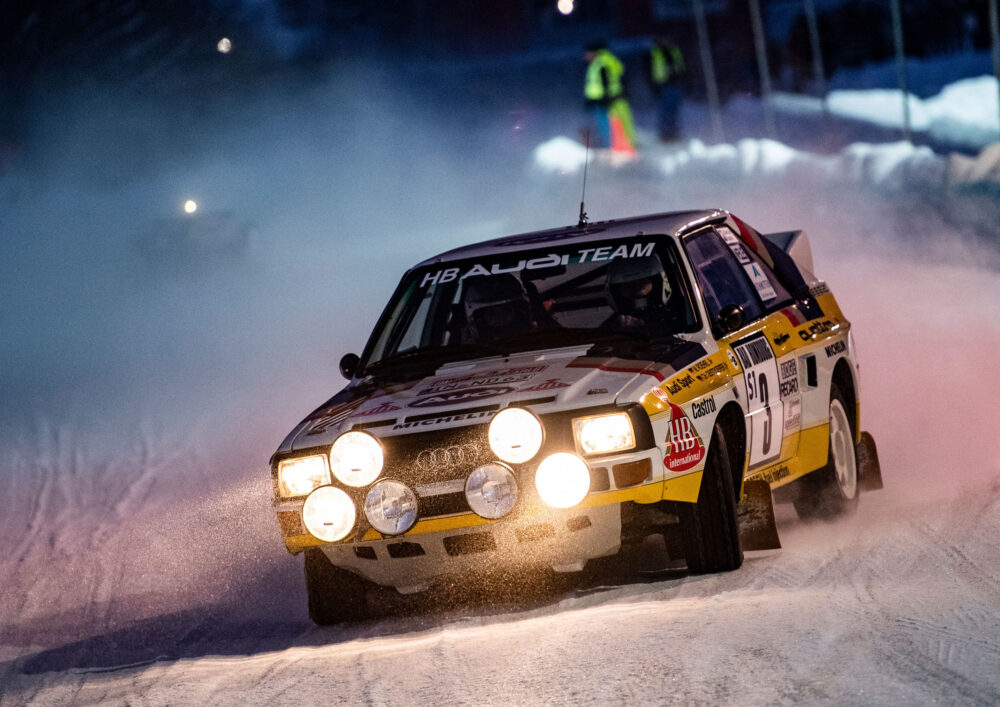
The Quattro is still competitive in classic rallycross events around the world. It’s regularly raced both in its original trim and in various stages of modification. Photo by Audi Newsroom
Additional photos from Wikimedia Commons

